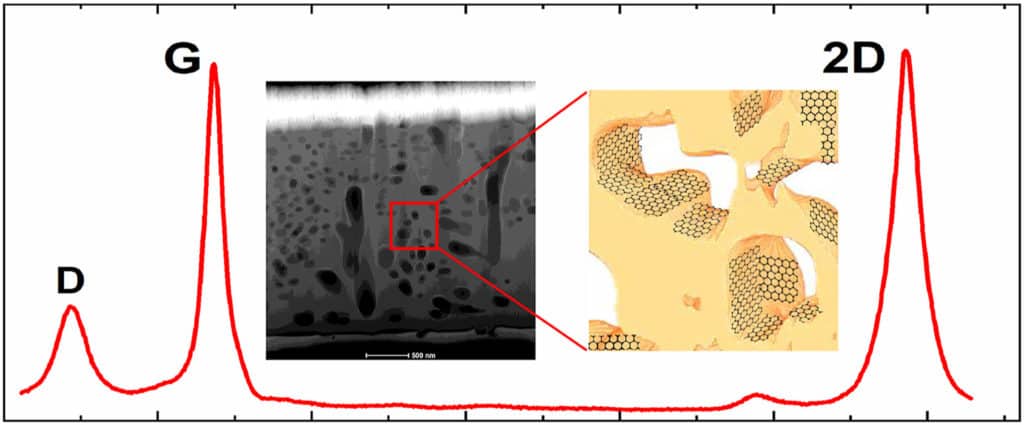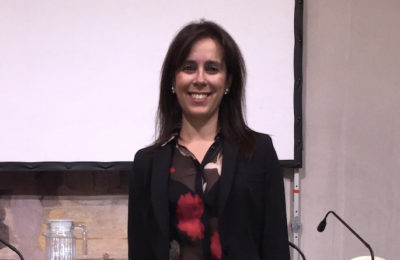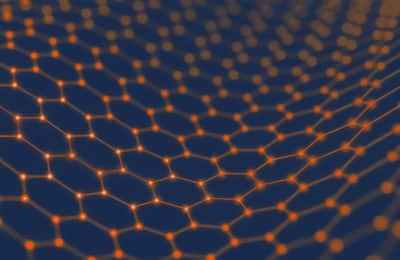How do you integrate the largest possible amount of a 2D material, such as graphene, into a limited space? By producing it not on a flat surface, but on a three-dimensional nanostructure. This is what has now managed to achieve a collaboration between Istituto Nanoscienze of the National Research Council (Cnr-Nano), the Technical University of Vienna and the University of Antwerp. The new material could offer a decisive advantage in green energy applications and chemical sensors. The results of the study are published in the journal Carbon.
“Two-dimensional materials, primarily graphene, offer the possibility of developing devices with unique characteristics”, explains Stefano Veronesi of Cnr-Nano and first author of the study. “Their two-dimensional nature, however, is a limiting factor for many applications that need large active surfaces, such as gas storage and detection, the realization of supercapacitors and electrodes for batteries. For this reasons, the possibility to achieve a 3D graphene assembly without losing its outstanding 2D properties is an ongoing research challenge”.
The team of scientists coordinated by Stefan Heun of Cnr-Nano and Ulrich Schmid of the Technical University of Vienna achieved the first growth of a graphene layer on a three-dimensional crystalline “skeleton”, by combining a series of advanced materials processing techniques.
The research team started with a silicon carbide – a crystal of silicon and carbon. With a complex electrochemical technique developed at the University of Vienna researchers removed more than 40% of the volume and transformed the solid crystal into a porous nanostructure, with nanometer-sized holes and channels. To obtain the growth of graphene, with the epitaxial technique, the researchers of Cnr-Nano, at the NEST Laboratory of Scuola Normale Superiore, heated the porous ‘skeleton’ to a temperature up to 1300 ° C in an ultra high vacuum environment at a base pressure of 10−11 millibar (these are the lowest pressures accessible with current technologie). In doing so, the growth of high quality epitaxial graphene on a 3D nanostructure has been acheived.
“The porous material has the structure of a miniature sponge with pores of the order of 100 nanometers. In just 20 microns of porous material, the useful surface area is 200 times greater than that of solid material. The result is a three-dimensional organization of graphene with a high surface-to-volume ratio “, says Veronesi.
“We have made a new and versatile material that integrates high quality graphene into a small space,” explains Stefan Heun from Cnr Nano who coordinated the study. ” The 2D quality and 3D structure of this graphene material offers a game changing perspective for in a wide range of applications, from nanoelectronics to sensors to the energy sector”.
“The initial application of the study was aimed at hydrogen storage: Since hydrogen can be stored on a graphene surface, the more the surface area and the more hydrogen can be stored,” concludes Veronesi. “But the large surface area is a decisive advantage also for increasing the performance of electrodes in fuel cells, for next-generation batteries, for solar-assisted hydrogen production (solar Hydrogen) and chemical sensors, for example for detection of rare substances in gases”.

Stefano Veronesi, Georg Pfusterschmied, Filippo Fabbri, Markus Leitgeb, Omer Arif, Daniel Arenas Esteban, Sara Bals, Ulrich Schmid, Stefan Heun, 3D arrangement of epitaxial graphene conformally grown on porousified crystalline SiC, Carbon Carbon, Volume 189, 2022, Pages 210-218,
https://doi.org/10.1016/j.carbon.2021.12.042.



